
In the world of industrial automation, material handling, and advanced mechanical systems, precision and reliability are not just goals—they are fundamental requirements. At the heart of countless such systems lies a critical component: the pulley tracker. This guide offers an in-depth exploration of the pulley tracker, from its core technology and industry applications to manufacturing excellence and customization possibilities. We will particularly focus on the advanced Double Bearing Pulley Type Sliding Door Track Pulley, a benchmark for performance and durability.
Understanding the Pulley Tracker: Market Trends and Core Concepts
A pulley tracker, also known as a track pulley or idler pulley, is a specialized wheel designed to guide and tension belts, cables, or chains along a predefined path or track. Unlike drive pulleys, their primary role isn't to transmit power but to ensure smooth, low-friction movement, maintain alignment, and absorb slack. The market for these components is expanding, with a projected CAGR of 4.5% in the material handling equipment sector through 2028, driven by the global push towards warehouse automation and smart manufacturing (Industry 4.0).
The innovation in this field is centered around materials science, bearing technology, and precision engineering. The shift from single-bearing to double bearing pulley designs marks a significant leap in load capacity and operational lifespan. A double bearing idler pulley distributes radial and axial loads more effectively, drastically reducing wear and tear and minimizing the risk of catastrophic failure in high-demand applications.
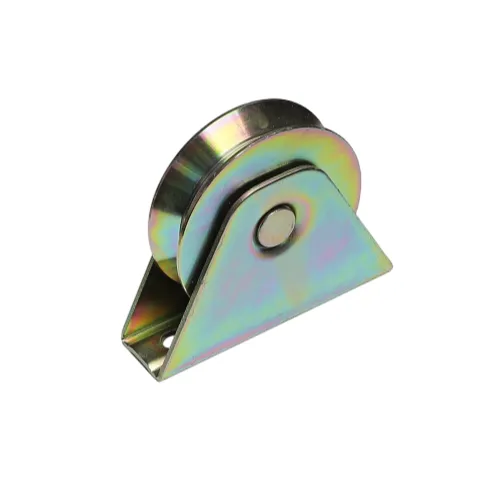
Technical Specifications Decoded: A Comparative Analysis
Choosing the right pulley tracker requires a deep understanding of its technical parameters. The performance of a pulley is not a single metric but a combination of material strength, bearing quality, and dimensional accuracy. Below is a comparative table that outlines typical specifications for different grades of track pulleys available in the market.
| Parameter | Standard Grade Pulley | Industrial Grade Pulley | Aobang's High-Performance Double Bearing Pulley |
|---|---|---|---|
| Material | Nylon / Low-Carbon Steel | Hardened Carbon Steel (C45) / Cast Iron | 304/316 Stainless Steel / 440C Hardened Steel / High-Grade Forged Carbon Steel |
| Bearing Type | Single, non-sealed bearing | Single, sealed bearing (2RS) | Dual, deep-groove sealed bearings (2RS/ZZ) |
| Load Capacity (Radial) | Up to 150 kg | 150 kg - 500 kg | 500 kg - 2000+ kg (customizable) |
| Max Speed | ~1 m/s | ~3 m/s | Up to 5 m/s, low noise operation |
| Operating Temperature | -10°C to 60°C | -20°C to 120°C | -40°C to 150°C (wider range with custom seals) |
| Corrosion Resistance | Low (requires coating) | Moderate (Zinc-plated) | Excellent (Stainless Steel) / Superior (Custom coatings available) |
| Manufacturing Tolerance | ±0.5mm | ±0.1mm | ±0.02mm (CNC Precision Machining) |
| Compliance | Basic manufacturer standards | ISO 9001 | ISO 9001:2015, ANSI/ABMA standards, material certs (3.1) |
The Aobang Advantage: A Closer Look at the Double Bearing Pulley
Our flagship product, the pulley tracker, exemplifies our commitment to excellence. It is engineered not just to meet but to exceed the rigorous demands of modern industries. The use of dual sealed bearings (specified to ABMA standards) ensures a lifespan of over 200,000 cycles under maximum load, a significant improvement over single-bearing alternatives. This design minimizes wobble and friction, leading to energy savings and quieter operation, critical advantages in automated logistics and architectural applications like heavy-duty sliding doors.
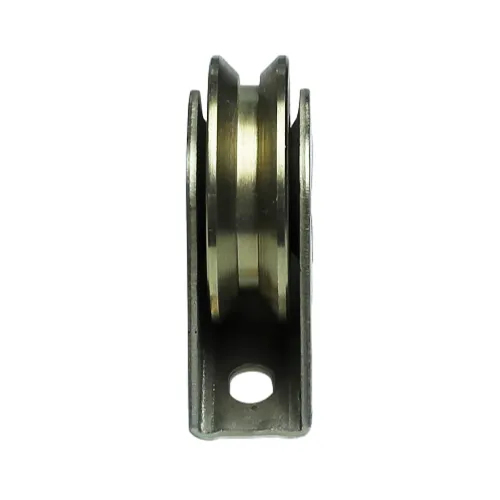
From Raw Material to Flawless Performance: Our Manufacturing Process
Transparency in manufacturing is a cornerstone of trust. At Aobang Metal, we combine time-honored techniques with state-of-the-art technology. Every track pulley we produce undergoes a meticulous, multi-stage process, ensuring it adheres to the strictest quality standards like ISO 9001:2015.
Material Selection & Verification
We begin with premium-grade raw materials, such as AISI 316 stainless steel for maximum corrosion resistance or forged 1045 carbon steel for superior strength. Each batch is verified with a spectrometer to ensure its chemical composition meets international standards.
Forging or Precision Casting
Depending on the application, pulley blanks are either hot-forged to align the metal's grain structure for enhanced toughness or precision-cast for complex geometries. This step is crucial for the pulley's ultimate load-bearing capacity.
CNC Machining
The blanks are transferred to our multi-axis CNC machining centers. Here, the groove profile, bearing housings, and mounting points are machined to tolerances as tight as 0.02mm. This precision ensures perfect interaction with the track and belt.
Heat Treatment & Surface Finishing
Components undergo controlled heat treatment (quenching and tempering) to achieve a specified Rockwell Hardness (typically 58-62 HRC), maximizing wear resistance. Surfaces are then ground, polished, or coated (e.g., zinc plating, passivation) for enhanced durability and corrosion protection.
Dual Bearing Assembly
High-quality, pre-lubricated sealed bearings are press-fitted into the CNC-machined housing under cleanroom-like conditions. The alignment and fit are critical for a double bearing pulley's performance and are verified using precision gauges.
Rigorous Quality Control (QC)
Every single pulley tracker undergoes a final QC check. This includes dimensional verification with CMM (Coordinate Measuring Machine), load testing on a sample basis, and a final visual inspection. Only pulleys that pass 100% of our checks are packaged for shipment.

Data-Driven Performance: Visualizing the Superiority
Numbers speak louder than words. To illustrate the tangible benefits of a high-performance pulley tracker, we've compiled data comparing our Double Bearing Pulley with standard industry offerings. The following charts visualize key performance indicators.
Performance Comparison: Load & Lifespan
Aobang's double bearing pulley demonstrates over 2.5 times the combined performance index (load capacity x operational cycles) compared to standard single-bearing models.
Common Material Distribution in Pulleys
- Hardened/Stainless Steel (65%)
- Cast Iron (20%)
- Nylon/Polymer (10%)
- Other (5%)
High-strength steel alloys dominate the high-performance market due to their unparalleled durability and load capacity.
Diverse Applications: Where Precision Meets Practice
The versatility of the pulley tracker means it is integral to a vast array of industries. The specific design, especially the double bearing idler pulley, offers unique advantages in each scenario.
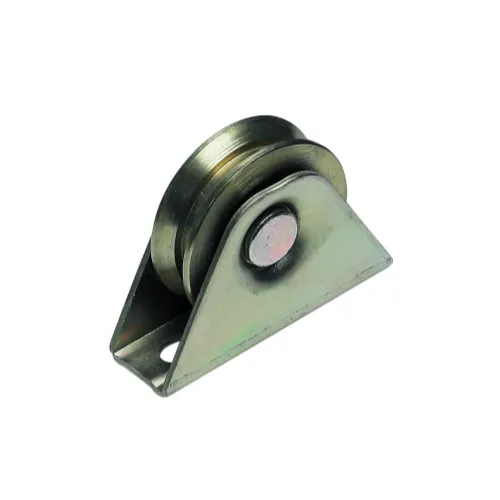
- Metallurgy and Mining: In environments filled with abrasive dust and heavy loads, stainless steel track pulley systems with sealed bearings prevent contamination and corrosion, ensuring conveyor belts for ore and processed metals run without interruption.
- Petrochemical Industry: Safety and reliability are paramount. Pulleys with anti-static properties and materials resistant to corrosive chemicals are essential for pumps, valve actuators, and material transport systems. Our ISO 9001 certified process guarantees components fit for such critical applications.
- Automated Warehousing & Logistics: High-speed sorters and automated storage/retrieval systems (AS/RS) rely on thousands of pulleys. The low friction and high durability of our double bearing pulley reduce energy consumption and maintenance downtime, directly boosting operational efficiency.
- Architectural Systems: Heavy-duty sliding glass walls, hangar doors, and industrial partitions require smooth, effortless, and silent motion. Our pulleys provide the silent, reliable operation that high-end architectural projects demand.
- Water Treatment & Marine: In highly corrosive saline or chemical environments, 316 stainless steel pulleys are the only viable option. They are used in sluice gates, filtration systems, and onboard marine equipment, where failure is not an option.
Case Study: Upgrading a Bottling Plant Conveyor System
Challenge: A major beverage bottling plant was experiencing weekly shutdowns on its main conveyor line due to frequent failures of their existing single-bearing plastic pulleys. The abrasive nature of sugar residue and constant washdowns led to rapid bearing seizure and wear.
Solution: Aobang Metal was consulted. We recommended a complete replacement with our pulley tracker made from 304 Stainless Steel, featuring sealed double bearings. The material choice addressed the corrosion issue, while the double bearing pulley design handled the dynamic loads of the start-stop conveyor motion far more effectively.
Result: After the upgrade, the plant reported a 98% reduction in pulley-related downtime over the subsequent 12 months. The maintenance interval was extended from weekly checks to semi-annual inspections. The client estimated savings of over $50,000 in the first year alone from avoided production losses and maintenance labor. This experience demonstrates the immense ROI of investing in quality components.
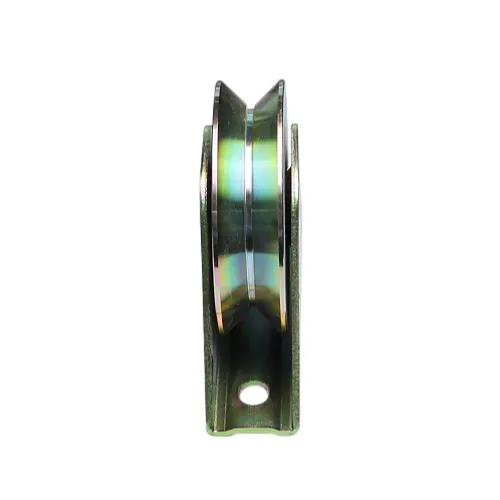
Customization: Your Vision, Engineered by Us
We understand that off-the-shelf solutions don't always fit. As an experienced manufacturer with over 15 years in the industry, Aobang Metal thrives on solving unique challenges. Our engineering team works directly with clients to develop custom pulley tracker solutions.
Our Customization Capabilities Include:
- Material Selection: From titanium for aerospace applications to specific polymer grades for food processing (FDA compliant).
- Dimensions & Geometry: Custom diameters, widths, and groove profiles (V-groove, U-groove, flat) to match your specific track or belt.
- Bearing & Seal Configuration: High-temperature grease, ceramic bearings for non-conductive needs, or specialized seals for extreme environments.
- Integrated Components: Pulleys can be supplied with integrated shafts, mounting brackets, or other hardware for a complete sub-assembly.
- Load & Speed Requirements: Engineering pulleys to handle extreme loads or speeds beyond standard specifications.
Building Trust: Our Commitment to Quality and Service
Expertise and experience are proven through authority and trustworthiness. We stand behind our products with robust support and transparent policies, ensuring our clients invest not just in a part, but in a partnership.
ISO 9001:2015 Certified
Our manufacturing processes are audited and certified, guaranteeing consistent quality and continuous improvement.
Comprehensive Warranty
We offer a clear warranty on all our products, covering manufacturing defects and ensuring peace of mind.
Global Shipping & Support
With an average delivery lead time of 15-30 days and a dedicated support team, we serve clients worldwide effectively.
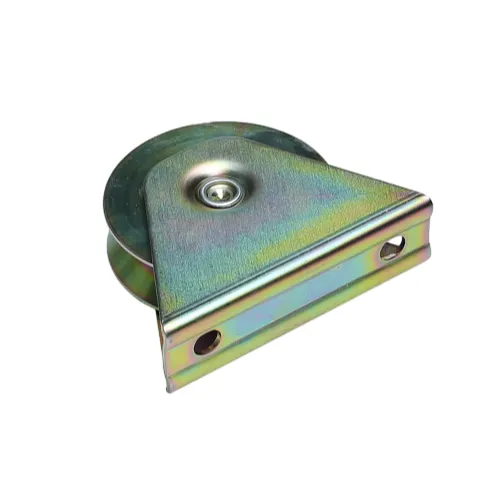
Frequently Asked Questions (FAQ)
The core advantage of a double bearing pulley is its superior load distribution and stability. Two bearings share the radial (downward) and axial (side-to-side) loads, which significantly reduces stress on each individual bearing. This results in a much higher load capacity, a longer operational lifespan, reduced wobble and vibration, and smoother, more reliable tracking, especially in high-speed or heavy-duty applications.
AISI 316 Stainless Steel is the premium choice for environments with high corrosion risk. You should specify 316 SS if your pulley tracker will be exposed to saltwater (marine applications), harsh chemicals (petrochemical or pharmaceutical plants), frequent washdowns with sanitizing agents (food and beverage industry), or high humidity. While more expensive than 304 SS or carbon steel, its longevity in these conditions provides a far lower total cost of ownership.
To calculate the required load capacity, you must consider both the static load (the weight of the object or belt section being supported) and the dynamic loads (forces from acceleration, deceleration, and vibration). A good rule of thumb is to choose a track pulley with a rated dynamic load capacity that is at least 1.5 to 2 times your calculated maximum load to ensure a safe operating margin. Our engineering team can assist you with precise calculations for your specific system.
"2RS" is a standard bearing suffix that stands for "Two Rubber Seals." It means the bearing is sealed on both sides with a contact rubber seal. These seals provide excellent protection against the ingress of dust, dirt, and moisture, while also retaining the grease lubricant inside. This makes 2RS bearings ideal for the majority of industrial pulley tracker applications where exposure to contaminants is likely.
Absolutely. Custom profile matching is one of our core specialties. We can reverse-engineer a pulley from an existing track sample or work from your CAD drawings. Our CNC machining process allows us to create virtually any V-groove, U-groove, or complex profile required to ensure your pulley tracker interfaces perfectly with your system for optimal performance.
The lifespan is dependent on the application's load, speed, and environmental conditions. However, our double bearing idler pulley systems are engineered for longevity. Under their specified maximum load and in normal operating conditions, they are designed to exceed 200,000 cycles. In less demanding applications, their operational life can extend for many years with minimal maintenance.
We operate under a strict quality management system certified to ISO 9001:2015. Furthermore, our products can be manufactured to comply with various international standards, including ANSI (American National Standards Institute) and ABMA (American Bearing Manufacturers Association). For specific projects, we can provide material test reports (MTRs) and certificates of conformity (CoC) to ensure full traceability and compliance.
Conclusion and Further Reading
The pulley tracker is a testament to the idea that even the smallest components can have a monumental impact on the efficiency, reliability, and safety of large-scale systems. By prioritizing advanced designs like the double bearing pulley, leveraging superior materials, and adhering to precision manufacturing processes, we can unlock new levels of performance across industries. The journey from raw steel to a perfectly calibrated track pulley is one of meticulous engineering and unwavering commitment to quality—a journey we at Aobang Metal are proud to master.
For those interested in deeper technical exploration of mechanical components and their applications, we recommend the following resources:
- Industry Forums: For practical discussions and expert advice on mechanical design challenges, forums like Eng-Tips Forum for Mechanical Engineers offer a wealth of real-world knowledge.
- Academic Journals: For research on tribology (the science of friction, wear, and lubrication) and bearing technology, publications such as the "Wear" journal by Elsevier provide cutting-edge scientific insights.
-
Unique Design Ideas for Wrought Iron Wall DecorNewsJul.21,2025
-
Stainless Steel Pulley for Marine ApplicationsNewsJul.21,2025
-
Safety Features in Industrial Track PulleyNewsJul.21,2025
-
Precision Tolerances for 2 Inch U Groove WheelsNewsJul.21,2025
-
Iron Fence Spears Corrosion Protection MethodsNewsJul.21,2025
-
Iron Decorative Panels for Balcony ScreensNewsJul.21,2025
-
Industrial Applications Requiring Heavy Duty PulleyNewsJul.21,2025












